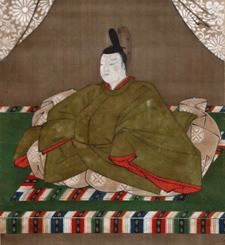Reign 697–707 Spouse Unknown Coronation September 23, 697 Name Emperor Monmu | Predecessor Jito Children Emperor Shomu Successor Gemmei | |
 | ||
Burial Hinokuma no Ako no oka no e no misasagi (Nara) Parents Prince Kusakabe, Empress Genmei Grandchildren Empress Koken, Princess Inoe Grandparents Emperor Tenji, Emperor Tenmu, Empress Jito Similar People Emperor Tenmu, Emperor Shomu, Emperor Tenji, Empress Koken, Emperor Jimmu | ||
Emperor Monmu (文武天皇, Monmu-tennō, 683–707) was the 42nd emperor of Japan, according to the traditional order of succession.
Contents
- Traditional narrative
- Events of Monmus life
- Kugy
- Eras of Monmus reign
- Non neng period
- Consorts and children
- References
Monmu's reign spanned the years from 697 through 707.
Traditional narrative
Before his ascension to the Chrysanthemum Throne, his personal name (imina) was Karu-shinnō.
He was a grandson of Emperor Tenmu and Empress Jitō. He was the second son of Prince Kusakabe. Monmu's mother was Princess Abe, a daughter of Emperor Tenji. Monmu's mother would later accede to the throne herself, and she would be known as Empress Gemmei.
Events of Monmu's life
Karu-shinnō was only six years old when his father, Crown Prince Kusakabe, died.
Emperor Monmu ruled until his death in 707, at which point he was succeeded by his mother, Empress Genmei, who was also his first cousin once removed and his first cousin twice removed. He left a young son by Fujiwara no Miyako, a daughter of Fujiwara no Fuhito: Obito no miko (Prince Obito), who eventually became Emperor Shōmu.
Emperor Monmu's reign lasted 10 years. He died at the age of 25.
The actual site of Monmu's grave is known. This emperor is traditionally venerated at a memorial Shinto shrine (misasagi) at Nara.
The Imperial Household Agency designates this location as Monmu's mausoleum. It is formally named Hinokuma no Ako no oka no e no misasagi.
Kugyō
Kugyō (公卿) is a collective term for the very few most powerful men attached to the court of the Emperor of Japan in pre-Meiji eras.
In general, this elite group included only three to four men at a time. These were hereditary courtiers whose experience and background would have brought them to the pinnacle of a life's career. During Monmu's reign, this apex of the Daijō-kan included:
Eras of Monmu's reign
Conventional modern scholarship seems to have determined that the years of Monmu's reign are encompassed within more than one era name or nengō.
Non-nengō period
The initial years of Monmu's reign are not linked by scholars to any era or nengō. The Taika era innovation of naming time periods – nengō – languished until Monmu reasserted an imperial right by proclaiming the commencement of Taihō in 701.
In this context, Brown and Ishida's translation of Gukanshō offers an explanation about the years of Empress Jitō's reign which muddies a sense of easy clarity in the pre-Taiho time-frame:
Consorts and children
Bunin: Fujiwara no Miyako (藤原宮子) (d. 754), daughter of Fujiwara no Fuhito
Hin: Ki no Kamado-no-iratsume (紀竃門娘)
Hin: Ishikawa no Tone-no-iratsume (石川刀子娘)
